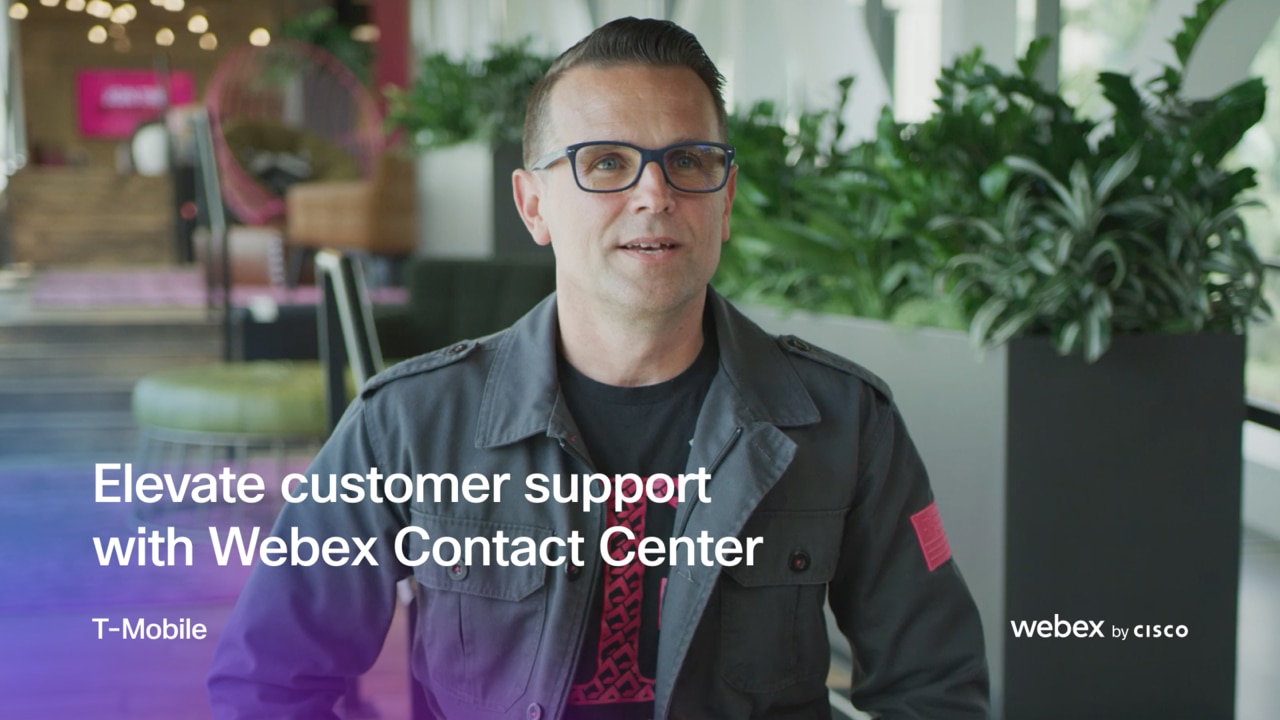What is a contact center?
Definition: A contact center is responsible for managing all of a company’s inbound and outbound customer interactions, regardless of their chosen communication channel. Here, you’ll learn about the importance of contact centers in terms of the customer experience, how they work, what they can do, and how to choose the best solution for your business needs.

What is a contact center?
Once upon a time, call centers were all about two simple types of interaction: Making and receiving phone calls. But nowadays, customers are migrating to newer and faster channels of communication. From email to SMS to social media, customers are accessible in more ways than ever before, and the “call center” has evolved to become a “contact center” or for the more forward-thinking, a “customer experience center.”
In turn, every interaction counts. Research shows that 59% of customers would abandon a brand they love after several bad interactions. And, 32% would leave a company they love after just one poor interation.
So what does this mean? Put simply, the customer experience is critical. That’s why businesses are transitioning from the call centers of old to the contact centers of tomorrow. It’s not enough to focus on one channel at a time–businesses need to manage every interaction simultaneously.
For this reason, you need a comprehensive solution that not only meets customers where, when, and how they want, but connects interaction history together to create a seamless experience, regardless of their chosen channel. More importantly, you need a contact center that can provide:
- Unrivaled agent intelligence
- Frictionless customer experience
- Optimized customer journeys
- Workforce optimization
- Hybrid scalability
- Automated workflows
Empowered by the speed and flexibility of the cloud, omnichannel contact centers are answering the call. In this guide, we’ll break down everything you need to identify the best solution to optimize the customer experience.
Why use a contact center?
Truthfully, businesses of all sizes stand to benefit from deploying a contact center solution. Yet, not every company needs one. If your business is small enough to handle your entire volume of customer service interactions, a dedicated contact center may not be necessary.
Otherwise, contact centers are a major competitive advantage for most organizations, whether they be small, medium, or enterprise-size. In essence, any customer or partner-facing business that aims to modernize customer service workflows and deliver optimal experiences has a lot to gain from a contact center.
With automated customer journeys and data-driven decision making, it’s no wonder why so many businesses are adopting contact center technology. Given that contact center technology spending is expected to reach $15.2 billion by 2023, this trend shows no signs of slowing down.
What’s the difference between a call center and a contact center?
You might be surprised to learn that call centers and contact centers are not one and the same. Although they serve a similar purpose, they each function in very different ways.
Traditionally, call centers didn’t do much more than manage inbound and outbound customer phone calls. In other words, they answer customer service and support inquiries, while also placing marketing, fundraising, and sales calls. In these cases, all interactions are handled exclusively over the phone.
In contrast, modern contact centers aren’t limited to just one channel of communication. Instead, they expand their functionality to include any and all ways a customer might interact with the company. This means they handle digital channels as well, such as email, text, chat, direct messages, social media, and even SMS.
Moreover, contact centers are often equipped with advanced capabilities that traditional call centers lack. Through cloud computing, artificial intelligence, and other highly functional tools, contact centers are able to effectively manage multiple–if not all–channels at the same time.
The different types of contact centers
It’s important to note that not all contact centers are created equal. There are several types of contact centers you should be aware of before deciding on the solution that best fits your needs.
Multichannel vs omnichannel
Remember, contact centers differ from call centers because they don’t narrow their focus to only voice calling. However, there’s a big difference between a contact center that manages multiple channels and one that can manage all of them.
Multichannel solutions, as the name suggests, are equipped to handle customer service interactions across multiple communication channels. This means that rather than focusing only on one point of contact, agents are actively managing inbound and outbound communication on many at the same time. Although a step up from the traditional call center, disparate channels are often siloed apart from one another, making data difficult to integrate into one comprehensive platform.
Omnichannel contact centers, on the other hand, manage the entire array of customer touch points. Generally speaking, they’re not limited to any number of communication channels. This means that regardless of a customer’s chosen method of contact, customer service agents can deliver quality experiences and outcomes throughout the entire customer journey.
Best of all, omnichannel solutions break down data silos and empower agents to leverage complete histories of customer interactions. This means that when a customer jumps from one channel to the next, their information carries over for a seamless, unified customer experience.
On-premise vs cloud contact centers
On-premise contact centers require employees to be physically present in the building. Given the rise of hybrid work, this poses an obvious challenge for modern businesses. Moreover, hosting an on-premise contact center is also costly to install, maintain, and upgrade over time. This makes scaling your business inherently difficult, especially if you’re a high-growth company.
In comparison, cloud contact centers require virtually zero physical installation. That means no clunky hardware that needs to be procured, set up, or maintained. Out-of-the-box platforms are easily, quickly deployed and pre-loaded with everything you need to get up and running, including advanced omnichannel capabilities, intuitive dashboards, and 24/7 support. Plus, they allow agents to work from anywhere–a must-have for the hybrid workplace. For these reasons, cloud-based solutions afford you the flexibility to scale your business as you grow at your own pace.
Here’s the best part: Cloud contact centers are far more cost-efficient than ones hosted on-site. Research shows that with the right provider, your company could experience a 262% increase in ROI–a staggering number made possible by cloud computing. With a cloud-based solution, you don’t need to worry about the hidden costs that often come with traditional contact centers.
For example, cloud contact center providers update software proactively. Not only is this a major benefit to cybersecurity and compliance, it eliminates the cost of maintaining and upgrading legacy systems. Plus, providers can routinely roll out new features and capabilities over time at no additional expense.
So, why transition from a call center to a cloud contact center? Consider all that we’ve learned:
- Omnichannel support means better customer experiences.
- Eliminated data silos improve customer interactions.
- The cloud offers rapid deployment and scalability.
- Hybrid employees can work from anywhere.
- The cloud reduces operational costs and improves ROI.
How does a cloud contact center work?
Let’s review the basics: Cloud contact centers manage inbound and outbound communication over a high-speed internet connection. These communications may include voice over IP (VoIP calling), text messaging, video conferencing, social media, and so on. Many providers offer contact centers as a service (CCaaS) at a fixed monthly cost to the business.
This process differs greatly from the traditional infrastructures of old. Call centers normally rely on the installation of an on-premises PBX system–a connection to the Public Switched Telephone Network (PSTN)–to make and receive analog calls. Not only is this time-consuming and expensive, it’s a lot more difficult to manage.
In contrast, cloud contact center providers take the responsibility of setting up and maintaining servers, equipment, and other hardware necessities. Because they’re rooted in the cloud, contact centers require only a high-speed internet connection and a computer. Once the software is installed, you can connect your corresponding communication channels and start managing them all from a single dashboard.
Of course, it isn’t exactly that simple. Cloud contact centers are supported by a hoard of technologies and advanced capabilities that make omnichannel communication possible, many of which are powered by artificial intelligence.
Artificial intelligence and machine learning
Contact centers are leveraging artificial intelligence (AI) to create self-service opportunities and, by extension, better customer experiences. Voice and chat bots, or virtual agents, use conversational AI that can be programmed using low-code tools to conduct a dialogue with a customer, answer frequently asked questions, and identify resolutions without the help of a human agent.
Likewise, Interactive Voice Response (IVR) systems use AI to answer customer questions over the phone and route them to the best contact for resolution. IVR systems are also leveraging historical data and machine learning to teach AI how to identify resolutions upon first contact–effectively streamlining the customer service process.
Perhaps best of all, contact centers will soon be taking advantage of predictive analytics. According to Aragon, as AI advances contact centers will be able to enhance the customer profile with details like predictive buying, predictive turnover, and highly accurate next-best actions for agents. That means highly contextualized messaging and optimized customer experiences across the entire journey.
Challenges of customer service centers
Of course, no customer service center is without its challenges. Whether it be a traditional call center, a multichannel solution, or even an omnichannel platform, all have hurdles that need to be navigated.
Let’s take a look at the potential obstacles that the best contact center solutions should overcome:
Long wait times
It’s a simple formula: The longer a customer waits for a resolution, the less satisfied they are with the service. Customer experience, in turn, takes a toll. That’s why it’s important for contact centers to prioritize first-contact resolutions.
With the right data on hand, agents are empowered to identify answers as quickly as possible. This not only leads to more positive customer service outcomes, but also improves CX overall.
Language barriers
When customers and agents struggle to communicate, it’s hard (if not impossible) to get on the same page. Not surprisingly, this has a significant impact on the agent’s ability to identify resolutions and the customer’s satisfaction with the experience.
Language barriers are often a symptom of outsourced support teams. That’s why cloud-based contact centers, where agents can work from anywhere, are such a vital asset to any company.
Poor agent performance
Sometimes agents lack the necessary insight to appropriately help a customer. Or, agents are overloaded by high call volumes and become overwhelmed by the workload. No matter the root cause, an agent’s performance directly affects the customer experience.
Without the necessary data, quality assurance managers can’t coach agents to more successful outcomes. In turn, CX is difficult to improve.

Fragmented CX and data silos
When customers want to transition from one support channel to another, they need to do so without interruption to the service process. If those channels are siloed, it’s difficult for agents to retain information between interactions, which means customers will more likely have to repeat themselves. And customers needing to repeat issues is a critical challenge for CX. In fact, 92% of customers would spend more time with a company if repetition was eliminated.
Not only are data silos a frustration for customers, they’re also a major barrier when it comes to optimizing the omnichannel experience.
Cybersecurity
As data collectors, contact centers need to be ready when malicious third parties attempt to breach their infrastructure. Data breaches aren’t only a risk to cybersecurity, they’re a risk to industry compliance as well.
Benefits of a cloud contact center
Thanks to their advanced capabilities, cloud contact centers are mitigating the gap between disparate communication channels and unifying the customer experience.
Let’s explore the most significant benefits that cloud contact centers offer.
Increased operational efficiency
Omnichannel contact centers can seamlessly switch between communication channels without skipping a beat–a major advantage to the agent and customer experience alike. Moreover, it only takes one team to handle the entire array of customer interactions on every channel, meaning your agents won’t be spread too thin or overwhelmed by their workload.
Improved agent performance
By empowering agents with data and other valuable tools, you can help them perform their job to the best of their ability. Better yet, with access to enhanced customer profiles, agents have everything they need to provide painless and frustration-free customer service.
Omnichannel customer experience
Customers have the freedom to connect with your company on their own terms and on the communication channel of their choice. Whether it be text, email, chat, or social media, omnichannel contact centers can service customers at any point in their journey.
Better yet, cloud contact centers streamline the delivery of positive outcomes through self-service opportunities and a seamless transition between virtual and human agents. In doing so, they boost customer satisfaction and, more importantly, customer loyalty.
Unparalleled visibility
Analytics-driven contact centers leverage data to inform the decision-making process across the entire customer journey. In turn, they obtain prescriptive insights into how they can improve CX for each individual customer. The result? Richer, deeper customer engagement.
Reduced operating costs
No on-site hardware installations, no costly maintenance fees, and no need to upgrade legacy systems. Why? Everything is hosted in the cloud and serviced by the provider on a regular, proactive basis. That means all an agent needs is a computer and an internet connection to start communicating with customers.
Scalability
Nowadays, remote work is a necessity. To support hybrid and remote employees, you need a solution that can operate anywhere. That’s where the cloud contact center comes in, allowing you to upgrade and grow your business at pace.
Must-have cloud contact center features and solutions
As with many innovative solutions, the cloud contact center packs the promise of advanced capability. But what are those capabilities?
Of course, not all providers are the same, and won’t all offer the same functionality. To help you narrow down your options, let’s explore the top features and solutions you should look for in a cloud contact center.

24/7 self-service opportunities
Virtual agents, such as chatbots and voice assistants, streamline mundane tasks and offload high call volumes to reduce agent workload and, in turn, alleviate turnover. More importantly, they generate successful outcomes without needing the assistance of a human agent.
In fact, Aragon Research predicts that by year-end 2022, AI-based contact centers will be able to identify a customer’s real issue 50% faster than traditional methods – a major boon to efficiency.
Seamless bot-to-human transition
For moments when customers want to transition from a chatbot to a human agent, this change can be made painlessly and without losing customer data. The result? Increased customer satisfaction and more positive interactions.
Omnichannel support
Manage the entire array of customer interactions on a platform that supports your customers’ most important channels, including voice, SMS, email, social media, and more. Better yet, omnichannel control hubs break down data silos and connect disparate channels for an enriched end-to-end customer experience.
Centrally controlled customer journeys
Empowered by a single consolidated dashboard, agents have all the intelligence they need to supercharge the customer experience. With a complete customer history and real-time data at their fingertips, agents have all the contextual information necessary to tailor interactions to each individual customer.
Out-of-the-box platform flexibility
Every enterprise is different–that’s why you need an open architecture. With the customization afforded by open APIs, you can embed third-party integrations, shortcuts, and other tools that satisfy your requirements. Easily make adjustments on the fly with a drag-and-drop workflow builder. The best part? As an entirely cloud-based platform, you have everything you need for rapid deployment.
Hybrid scalability
The workforce is in a transformative period. To keep up, you need a contact center that isn’t bound by physical location. Empower your agents to work from anywhere with an entirely cloud-based platform.
Workforce optimization and collaboration tools
Increase first call resolution and productivity with performance analytics, call recording, automated transcripts, and more supervisory tools that empower you to coach agents toward success. Help remote agents work together with integrated collaboration tools, like all-in-one messaging, call-to-meeting elevation, and mid-call file-sharing. Plus, boost morale through gamification and agent self-assessment.
Cloud security
High-level security protocols protect you and your customers’ data from breaches and leaks. With end-to-end encryption, all communications are kept entirely secure from unauthorized access. Plus, cloud platforms automatically update software to ensure all vulnerabilities are addressed as soon as they’re identified–no action required by the company.
How to choose a cloud contact center solution
The importance of the customer experience cannot be overstated–every interaction counts. Contact centers, in turn, are on the frontline of the customer journey. For this reason, deciding on the best provider for you and your business is no simple task.
To help you decide, ask yourself the following questions:
Does this contact center provider support an omnichannel experience?
Perhaps most importantly, you need a solution that leaves no stone unturned. In other words, you need a provider that bridges the gap between you and your customers.
With Webex Contact Center, agents can see all communication channels in a single view on their agent desktop. And, agents can use Webex Connect to setup relevant channels to your business (like a company Facebook page or Instagram profile).
Does this contact center provider empower my agents to succeed?
Your contact center agents are the heart and soul of your customer service team. In turn, you need a provider that affords agents the ability to leverage real-time and historical data to make tailored improvements to the customer journey,
Webex Contact Center provides all that and more, including a suite of collaborative tools that help agents grow into better, more efficient customer service specialists.
Does the provider offer an out-of-the-box platform solution?
Customers are changing their expectations. To maintain pace, businesses need ready-to-go solutions that are easily, rapidly deployed. More importantly, they need one that can fit their needs.
With Webex, you obtain a fully featured, completely out-of-the-box platform with a customizable interface. Best of all, it’s an entirely cloud-based solution that can be deployed anywhere, anytime.
Webex understands the importance of the customer journey. Learn more about how Webex Contact Center can help you optimize the omnichannel experience.
Related reading

Rethinking ‘contact center’ technology in the travel industry
Imagine your business is suddenly–and unpreparedly–inundated with calls and sweeping requests. That’s the exact scenario – and real-life business crisis–that played out in the travel insurance industry due to the global COVID-19 health pandemic.

T-Mobile answers the call for incredible customer experiences
T-Mobile leverages Webex to improve collaboration and deliver incredible customer experiences, while securing their spot as one of America’s leading wireless providers with 104.8 million customers.

Contact center innovation in the “age of the customer”
The contact center industry is undergoing massive change and upheaval. It’s evolving to deliver omnichannel experiences, and to cater to the needs and desires of today’s ever-demanding customers. Innovations in Artificial Intelligence (AI), cloud technology, data analytics, and automation are some of the primary reasons for the seismic shifts.



